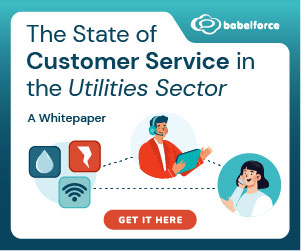If your agents and your customers just don’t seem to be able to communicate properly with one another, maybe you need to invest in some talking training. Peter Gale uses some very real examples to demonstrate how neuro linguistic programming has worked in his call centre.
If you were to ask any CEO in the world what their most important asset is, they would pretty much all answer: “My people”. Why is it, then, that we hear of so few stories of exceptional training? Why is it that, when the going gets tough, the training budget is always the first area to be cut?
“Understanding your sensory preference is vital because communication problems are often little more than two people speaking with mismatched representational systems.”
In this article I wish to talk about a technology of communication that we have used in our business to underpin our training that has made a significant difference to the results that we achieve as an outsourced contact centre provider.
This technology is called neuro linguistic programming or NLP.
NLP is an art that enables people to communicate better with each other. Richard Bandler and John Grinder founded it in the 1970s while working at the University of California.
What intrigued Bandler and Grinder was the enormous variation in peoples’ effectiveness as communicators, in particular why certain people are such extraordinarily gifted communicators and influencers.
- Just what was their ‘gift’?
- What was it that made them effective?
- And, could it be learned?
To answer these questions, they chose to study excellence. In fact, NLP is often defined as the ‘art and science of personal excellence’.
They also studied various types of psychotherapy and tried to understand specifically what happened when it was successful.
All of this sounds well and good, but what specifically does it mean and how has it made a difference in our business?
I would like to give you three examples taken from the last week of how this has helped us communicate better with our customers:
1) “You, like me…”, “We, like you…”
Our team leaders have recently completed a ‘Train the Trainer’ course. The team leaders learnt that if the conscious mind hears something that it does not perceive as threatening in any way, it automatically goes in to the subconscious. Using “You, like me…” or “We, like you…” are very good examples of this.
One of our team leaders took over a call from a customer who was particularly angry. They took the time to listen carefully to the caller in full before answering: “We, like you, want to get this matter resolved for you as soon as possible”. They also said: “You, like me, probably get frustrated when things are not delivered on time”.
The team leader quickly calmed the caller down. What the caller was not necessarily aware of consciously was that they liked the team leader and that the team leader liked them, simply because they had been told as much.
The basic principles of NLPIn their research, Bandler and Grinder discovered that people have three basic methods of perceiving the world around them (or representational systems):
Visuals see the world, auditories hear it, and kinesthetics feel it. These are the mental maps of reality through which we perceive the world around us. The successful therapists were able to pick up on this and communicate more effectively with their client and consequently produce better results. Understanding what your, as well as other people’s, sensory preference is is vital because communication problems are often little more than two people speaking with mismatched representational systems. |
2) Quickly build rapport
Our team leaders also learnt the basic principles about the three main communication types (as above). Their new ability to rapidly identify a caller’s preference has meant that they can now quickly build rapport by using this preferred type.
A caller contacted us with a payment problem – their credit card had expired and their subscription had stopped. The caller was anxious to make sure we had the new details recorded properly; they said: “I will feel much more comfortable when this is all sorted out”.
The team leader handling the call would ordinarily have said: “I hear what you are saying” (she has a preference for auditory). But because of her awareness, she now said: “I understand what you are saying”, and the subsequent rapport was good.
This is a common challenge for telesales staff looking to close the sale. A visually inclined agent may often say: “So how does that look to you?”, whereas if they are selling to someone whose preference is auditory a better close may be: “So how does that sound to you?”

3) The power of words
This final example is actually from outside the workplace, but demonstrates the tools learnt and the power of words.
One of our team leaders who attended the course had asked her husband many times if they could paint a wall in their living room dark red. He had always disliked the idea and said an immediate ‘no’.
Equipped with a new understanding of the power of words, she tried a different approach. At various times during the day she used the word ‘red’ in things that she said. For example, “I have just read this great new book” or “I have just read a great story in the newspaper” or “I was so angry I just saw red”.
At the end of the weekend she asked her husband again if he would paint the wall and he gladly obliged.
What difference do these case studies make?
Hopefully the three examples above give a flavour of what a difference a great training programme can make. They may only be tiny changes in small areas but when you put them together it is clearly evident that it helps to create the small difference that makes the difference.

I believe that this greater understanding will improve our customers’ experiences. It may not be a conscious improvement, but it will definitely be a better experience. We believe that by adopting NLP techniques, our callers will feel better understood and appreciate being listened to.
The contact centre industry in the UK is continually being challenged to ‘raise the bar’. It is therefore up to the industry to focus on quality as well as the overall customer experience. It is critical that the customer feels listened to and understood – whether receiving an outbound call or making an inbound one. I believe that the tools of NLP, when integrated with a bespoke training programme, help us to raise the bar at DBF.
Peter Gale is UK manager at Data Base Factory UK (DBF UK)
Author: Jonty Pearce
Published On: 3rd Jun 2007 - Last modified: 15th Aug 2025
Read more about - Customer Service Strategy, Service Strategy






































Hi,
Interesting articles but I am not sure that all of the examples you have used are accurate.
The example that really stood out for me was about the paint and that the lady “was so angry she just saw red.”
In reality this is unlikely to work because (of spiral dynamics) red is often associated with danger. There isn’t a problem with “red” as the colour of the paint, but in this particular example the husband may have associated the comment with danger and disliked the idea.
I hope that makes sense? Also in thte rapport building section you seem to have mixed up some o the modalities.
Firstly “I will feel much more comfortable…” is a kinesthetic lead and would have been better met with a matched response similar to “I’ll have those problems SMOOTHED out” or something.
Interesting article otherwise!
Take care.